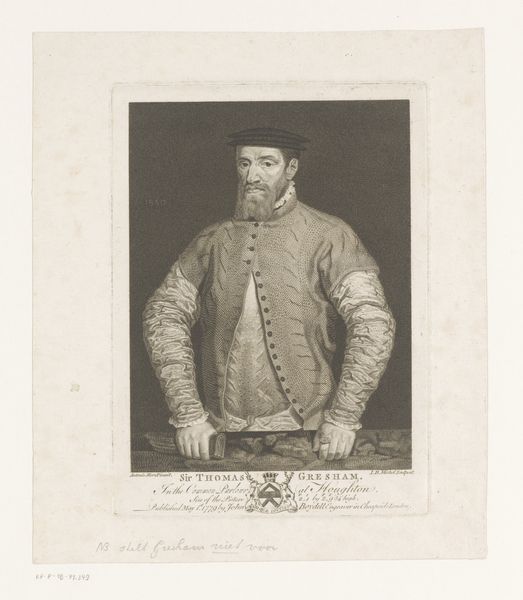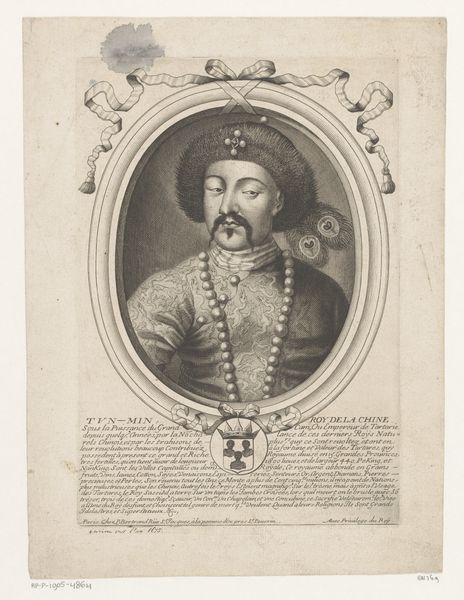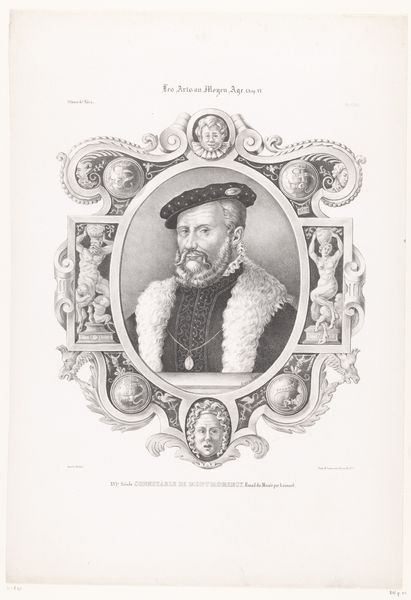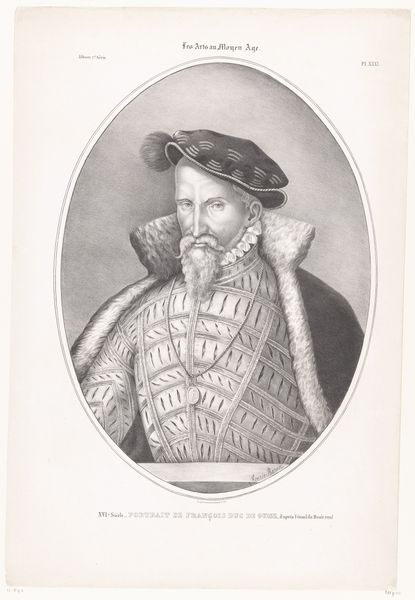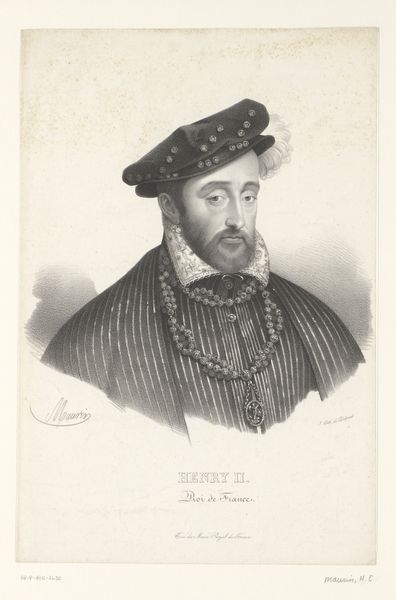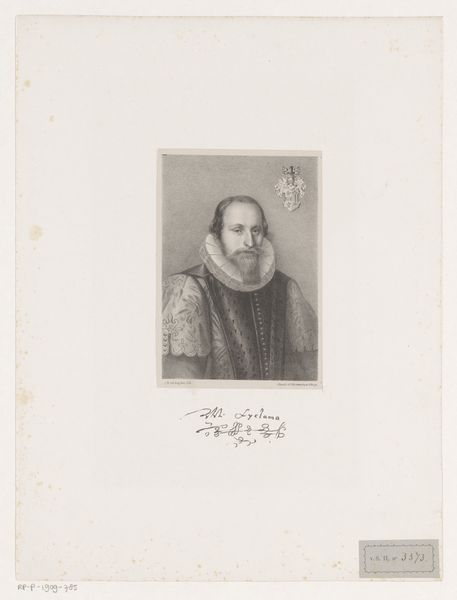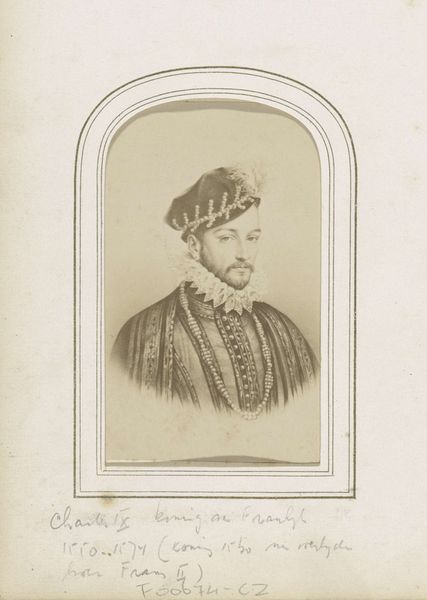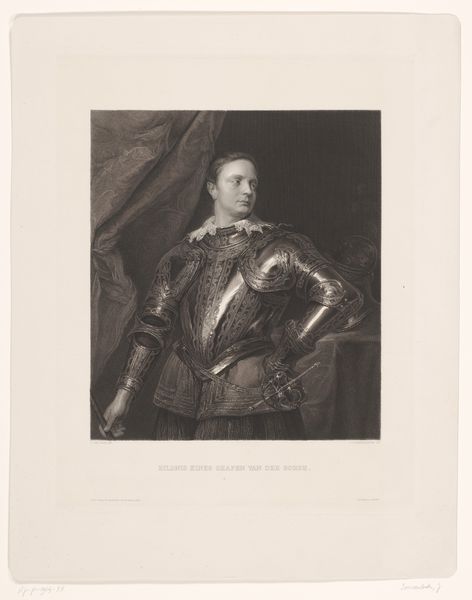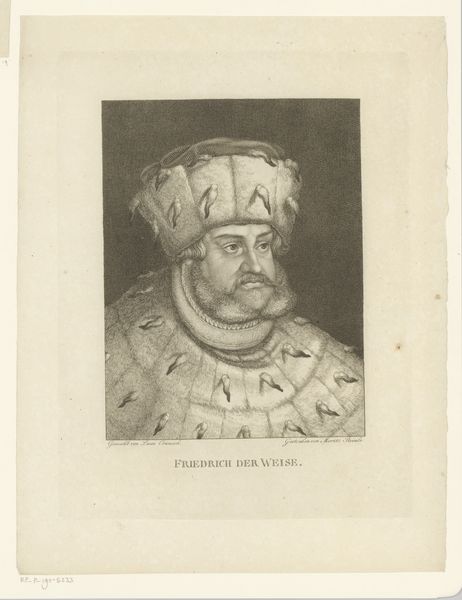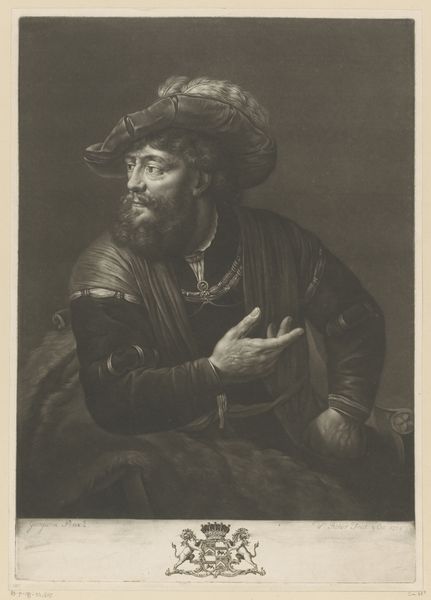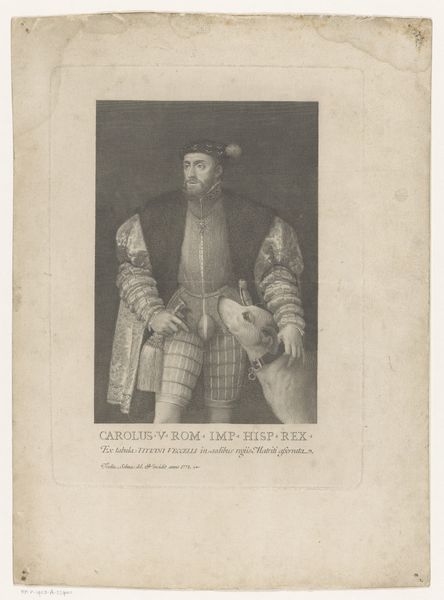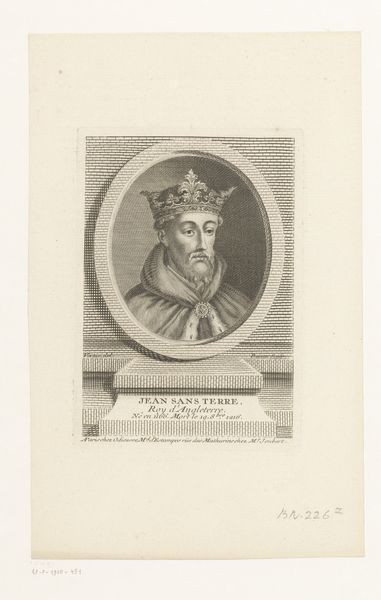
drawing, print, engraving
#
portrait
#
drawing
# print
#
figuration
#
men
#
history-painting
#
engraving
Dimensions: Plate: 11 5/8 × 7 7/8 in. (29.5 × 20 cm) Sheet: 13 3/4 × 11 3/4 in. (35 × 29.8 cm)
Copyright: Public Domain
Curator: Before us is "Sir Walter Raleigh," an engraving completed sometime between 1813 and 1826. The artist here is James Posselwhite, depicting the famous English explorer. Editor: The high contrast of the engraving gives Raleigh a very austere quality. He appears rather imposing, and perhaps a bit melancholic? It's hard to say if that's an intentional comment on his life or just the style of the time. Curator: Raleigh's legacy is undeniably complex. He was a celebrated figure, an explorer, but also complicit in the colonial project and the violence it unleashed, particularly in the Americas. The visual rhetoric of power here, evident in his opulent attire and self-assured gaze, serves to emphasize that reality. Editor: Exactly. Look at the details of his clothing—the ruff, the embroidered doublet. Those aren't just markers of status; they're also loaded symbols representing wealth acquired through colonial exploitation. And notice how the shadows around his eyes deepen his gaze. He looks like someone who bears the weight of history, or perhaps secrets. Curator: The artist employs classic strategies of portraiture to reinforce Raleigh's position within the hierarchy. The use of engraving allowed for wider dissemination of his image, further cementing his role as a historical figure. We also should not gloss over that Raleigh was imprisoned more than once and, ultimately, executed. That reality impacts how we engage with a work such as this one. Editor: That's a good point. It's not a straightforward celebration, it’s more like a study in ambiguity. What does Raleigh mean as a cultural figure? This piece really distills the visual codes around power and renown, while hinting at something darker beneath the surface. A feather on his cap reminds me of vanity too, while at the same time serving the purpose of marking status. Curator: Engaging with pieces like this becomes vital to unpicking historical narratives and really pushing against simplified or even celebratory depictions of the past. It opens an opportunity for acknowledging difficult histories, particularly related to British colonialism. Editor: Yes, seeing it like that, it encourages a dialogue that really resonates with a contemporary audience as it challenges simplistic, heroic readings of the past and forces us to engage with the multifaceted realities of these figures and their place in history.
Comments
No comments
Be the first to comment and join the conversation on the ultimate creative platform.
